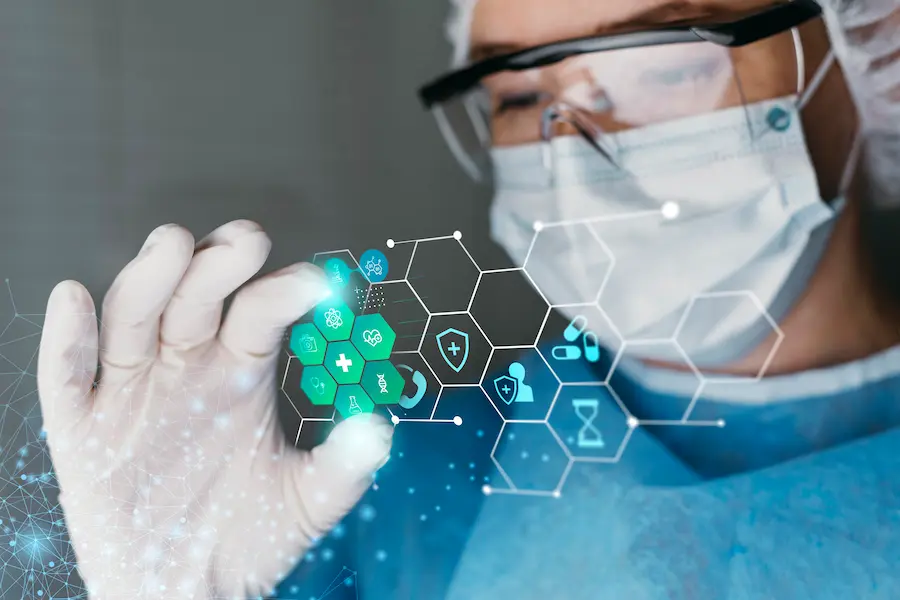Medical technology, or Med Tech, is transforming healthcare in ways we never imagined. At its core, Med Tech blends innovative technology with traditional medical practices to create solutions that help both patients and doctors. From wearables that monitor your health to robotic surgeries that improve precision, Med Tech is not just about fancy gadgets; it’s about saving lives and improving the quality of care. In this article, I’ll walk you through some of the most exciting developments in Med Tech and how they’re shaping the future of medicine.
The Rise of Wearable Health Devices
Wearable health devices, like fitness trackers, smartwatches, and smart clothing, are helping people take control of their health in ways that were once impossible. Personally, I can’t imagine my day without my fitness tracker it gives me real-time updates on my heart rate, sleep patterns, and daily activity, which helps me stay on top of my health every day.
These devices have become essential, especially for those with chronic conditions like diabetes or high blood pressure. Wearables don’t replace doctor visits, but they give you the power to monitor your health continuously. This constant data flow helps spot any issues early, so you can take action before they become more serious.
Being able to track your health at any given moment is incredibly empowering. I no longer have to wait for a doctor’s visit to know how my body is doing. I can track my steps, heart rate, and even sleep patterns at the touch of a button, and it allows me to make healthier choices every day.
Telemedicine: Revolutionizing Patient Care
Telemedicine has made healthcare more accessible than ever before. With telemedicine, you can consult with doctors remotely, without ever leaving your home. I’ve used it during some of my busiest weeks when scheduling an in-person appointment would have been a hassle, and it was a complete game-changer.
For people living in rural areas or places with limited healthcare access, telemedicine is invaluable. You no longer have to travel long distances or take time off work to see a doctor. It’s not a replacement for all types of care some conditions still require physical exams or in-person visits but for routine check-ups and follow-ups, telemedicine is incredibly convenient.
In my experience, telemedicine has cut down on wait times and made healthcare more accessible. For someone like me who’s always on the go, it’s a blessing to be able to consult a doctor without missing a day of work. It’s an example of how Med Tech is putting healthcare back in our hands.
Robotic Surgery: Better Accuracy, Less Disruption
Robotic surgery is one of the most impressive uses of Med Tech. It allows doctors to perform highly precise surgeries with smaller incisions, leading to quicker recovery and less pain. Systems like the da Vinci Surgical System are controlled by surgeons from a console, with robotic arms performing the operation with unmatched precision.
I’ve always been fascinated by how technology like robotics can make surgery less invasive, reduce recovery time, and improve patient outcomes. It feels like we’re entering a new era in healthcare, where these innovations are transforming what we once thought possible.
Robotic surgery reduces the need for large incisions, cuts down on blood loss, and helps patients heal faster. Because robots can perform delicate tasks with more accuracy than human hands, patients experience less pain and recover more quickly. With high-definition cameras and 3D imaging, doctors can visualize the surgical area in great detail, ensuring a more accurate procedure. While robotic surgery can be costly, it’s becoming more common, and I expect it will be more affordable and accessible in the future.
Artificial Intelligence in Diagnostics
Artificial intelligence (AI) is rapidly changing how we diagnose diseases. By analyzing large sets of medical data like images, lab results, and patient history AI is making diagnoses faster and more accurate than ever before.
AI’s speed is what makes it such a valuable tool for radiologists. Imagine scanning thousands of X-rays or MRIs in a matter of seconds. AI picks up on patterns that humans might miss, leading to quicker, more accurate diagnoses and better treatment outcomes.
From my perspective, AI is a game-changer in diagnostics. The ability to get instant results means faster treatment, which is especially crucial in emergencies. But AI isn’t just about diagnosing; it’s also helping predict potential health risks before they happen. By analyzing lifestyle, genetic, and environmental factors, AI can identify who is at risk for heart disease, diabetes, or even cancer, enabling preventive care that improves long-term health.
3D Printing: Custom-Made Prosthetics and Implants
3D printing has completely transformed how we create medical devices, particularly prosthetics and implants. Now, doctors can design custom devices tailored to each patient’s needs, ensuring better comfort and improved functionality.
What excites me most about 3D printing is how it’s making healthcare more personalized. In the past, many people couldn’t afford high-quality prosthetics, but now, thanks to 3D printing, these devices are not only more affordable but also more accessible to those in need.
In prosthetics, 3D printing enables the creation of lightweight, durable, and custom-fitted limbs. Unlike traditional methods, it can produce complex shapes and designs, making prosthetics more functional and attractive. This has made a huge difference in areas where custom-made prosthetics were once out of reach.
Additionally, 3D printing is being used for bio-printing tissues and organs. While still in the early stages, this technology holds the potential to revolutionize organ transplantation by creating personalized organs, reducing the risk of rejection, and eliminating the need for donors.
Digital Health Records: A New Era in Patient Information
Digital health records (EHRs) have replaced paper systems, allowing healthcare providers to store, manage, and share patient information more efficiently. This has become one of the most important advances in Med Tech, ensuring better care and reducing errors.
The real advantage of digital records is their accessibility. Doctors can access a patient’s full medical history in real-time, helping them make better decisions and offer more coordinated care. It’s made healthcare more efficient and less prone to mistakes.
From my own experience, digital records have been a major win for both patients and healthcare providers. I love being able to check my medical records anytime, and I feel more in control of my health. These systems also allow patients to directly communicate with healthcare providers, encouraging better engagement and informed decisions.
Med Tech and Global Health Equity
Med Tech is playing an essential role in improving global health equity. With mobile health apps and telemedicine, healthcare is becoming more accessible in underserved areas. These technologies bridge gaps and help provide more equitable access to care.
In regions with a shortage of healthcare professionals, telemedicine allows patients to consult with doctors remotely, ensuring they get timely care. Mobile health apps can also track patient health and enable necessary interventions before problems get worse.
Med Tech is leveling the playing field, helping people who previously had limited access to healthcare. Thanks to these innovations, the future of global health looks much brighter.
The Future of Med Tech: What’s Next?
The future of Med Tech is incredibly promising. Innovations like AI, robotics, and 3D printing will continue to evolve and push healthcare to new heights. As these technologies become more affordable, the quality of care will improve, and costs will decrease.
Looking ahead, we’ll see more integration of Med Tech into everyday life. AI combined with wearable devices will offer continuous health monitoring, helping doctors spot issues before they become serious. Also, gene therapy and CRISPR gene editing may soon offer solutions to genetic diseases, allowing us to live longer, healthier lives.
I’m genuinely excited about what’s next for Med Tech. We’re just scratching the surface of its potential, and the next few years could bring breakthroughs that completely change the way we think about healthcare.
Conclusion: The Bright Future of Med Tech
Med Tech is revolutionizing healthcare, making it smarter, more personalized, and more accessible. With innovations like AI, robotics, wearables, and personalized medicine, healthcare is evolving to meet the needs of individual patients in real-time. Although there are challenges around ethics, privacy, and regulation, the benefits of Med Tech far outweigh these obstacles.
As these technologies continue to develop and become more affordable, we can expect a future where healthcare is more efficient and inclusive. Med Tech has the potential to bridge healthcare gaps globally, improving outcomes and creating a healthier, more connected world.
I firmly believe in the transformative power of Med Tech. It will continue to improve lives around the globe, and the future of healthcare has never been brighter. I’m excited to see where these innovations take us.
Read Also:5 Incredible Ways IT Tech is Revolutionizing Our Work and Daily Life – Embrace the Change

